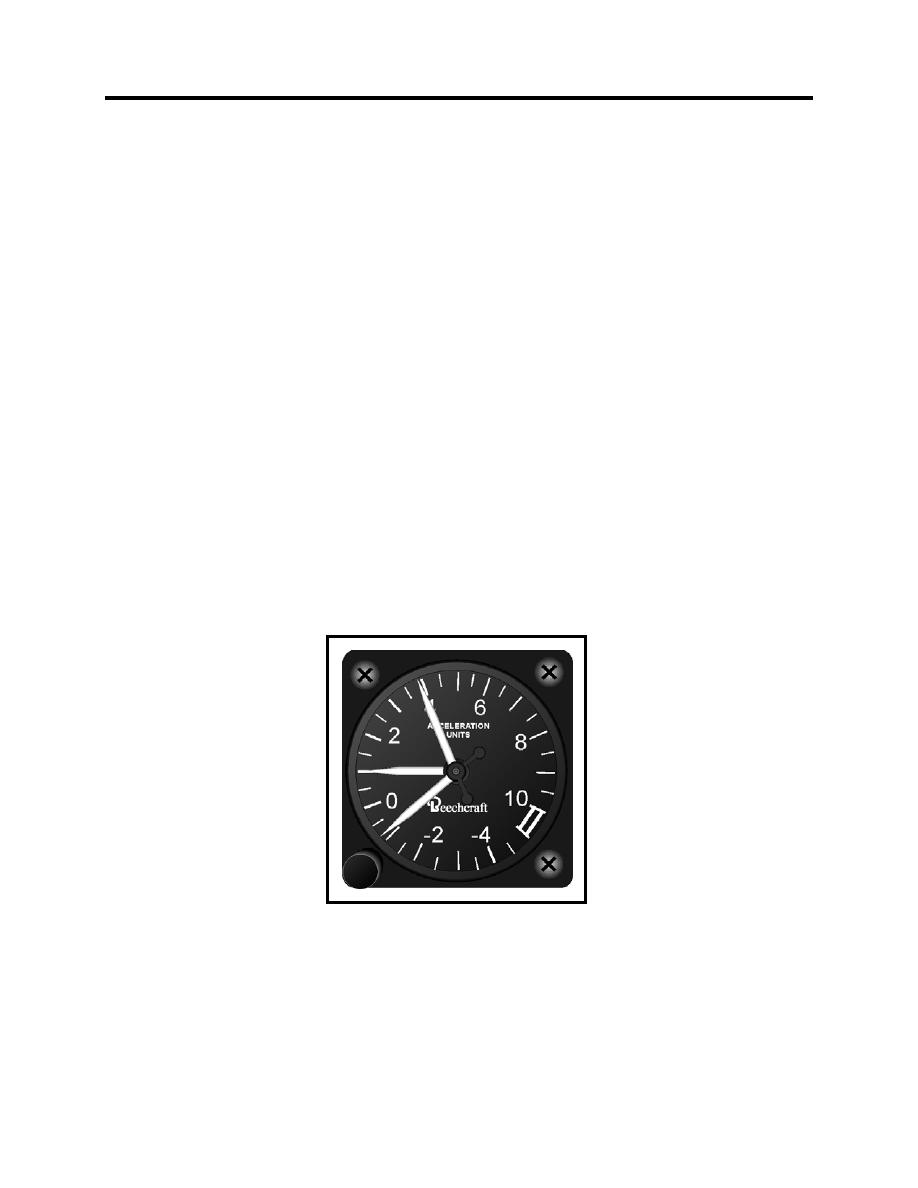 |
|||
|
|
|||
|
|
|||
| ||||||||||
|
|  CHAPTER THIRTEEN
T-34C AIRCRAFT SYSTEMS FAMILIARIZATION
WORKBOOK
The pointer needle indicates the direction and the rate of turn. The normal rate of turn in
instrument flying conditions, indicated by a two-needle width deflection, is known as a standard
rate turn (SRT) and results in 360 of turn in two minutes. A one-needle width deflection is
known as a one-half-standard rate turn and will result in 360 of turn in four minutes. A red
power failure flag labeled OFF will be displayed on the instrument face if electrical power to the
gyro is lost.
The ball in the inclinometer indicates the relationship between the angle-of-bank and the rate of
turn by its position in relation to two white vertical lines (the center). In a practical aerodynamic
sense, the balance ball shows directly the longitudinal alignment of the aircraft. Uncoordinated
control inputs will cause the aircraft to fly in an unbalanced condition. This will cause the
balance ball to move left or right of center, indicating a slip or skid.
1304. RECORDING ACCELEROMETER
Both cockpits have recording accelerometers which are "powered" by "G" force and are located
at the bottom of the instrument panel. Their purpose is to continuously indicate positive and
negative "G" loads on the aircraft, as well as recording maximum positive and negative Gs.
Each instrument has three pointers. The indicating pointer (the longest) indicates presently
applied "G" load, while the positive and negative pointers follow the indicating pointer to its
maximum travel. These recording pointers remain at the maximum load imposed and can only
be reset by depressing the reset knob in the lower left corner of the instrument. In the Naval Air
Training Command the reset knobs are actuated by authorized maintenance personnel only. The
T-34C limits are +4.5 and -2.3 Gs.
Figure 13-4 Recording Accelerometer
13-4
ATTITUDE, TURN AND SLIP, AND ACCELEROMETER SYSTEMS
|
|
Privacy Statement - Press Release - Copyright Information. - Contact Us |